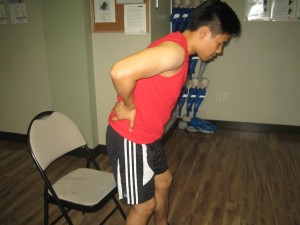Sacroiliitis is one of the inflammatory conditions affecting the spinal column. It is also one of the components of various conditions such as Crohn’s disease, ulcerative colitis and osteoarthritis.
https://www.youtube.com/watch?v=0xy4nAPYivg
What are the causes?
- Any form of spondyloarthropathy which includes arthritis, ankylosing spondylitis or other rheumatologic ailments.
- Degenerative arthritis of the spine that causes deterioration of the sacroiliac joints
- Any form of trauma that affects the lower back or hip such as falls or vehicular accidents
- Intravenous drug use
Over-the-counter pain medications such as acetaminophen or NSAIDs such as ibuprofen for pain relief. - Infection of the sacroiliac joints
- Among women, pregnancy and childbirth are the causes due to the widening of the pelvis and stretching of the sacroiliac joints
Indications of sacroiliitis
- Low back pain
- Fever
- Hip pain
- Leg pain
- Stiffness of the back and hips
- Pain is aggravated by sitting for long periods of time
Is it different from sacroiliac joint dysfunction?
It is important to note that sacroiliitis is often confused with sacroiliac joint dysfunction since both triggers sacroiliac joint pain but they are different conditions.
When it comes to sacroiliitis, there is inflammation of the sacroiliac joint that may or might not be due to sacroiliac joint dysfunction. As for sacroiliac joint dysfunction, it develops due to an abnormal movement of the joint either excessive or limited movement which results to inflammation.
Management
- Adequate rest
- Application of ice or heat to alleviate the pain and inflammation
- Over-the-counter pain medications such as acetaminophen or NSAIDs such as ibuprofen for pain relief
- Prescription medications such as tramadol can be prescribed or even narcotic pain medications for a limited time
- Muscle relaxants can be given to deal with sore muscle spasms
In severe cases of sacroiliitis, a sacroiliac joint injection is suggested to confirm if the joint is the source of the pain as well as direct administration of the medication into the joint. In most cases, the injections are given 3-4 times in a year. After the injections, physical therapy is started to restore the range of motion.

